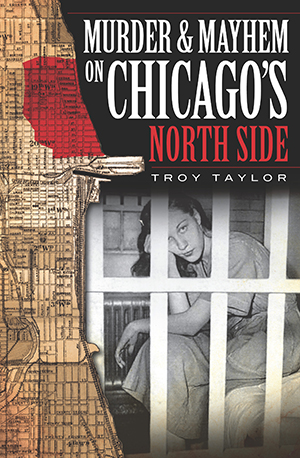
The last time we visited Chicago on a cold winter’s night, a gangster lay bleeding out in a doorway—a man who had stood up to none other than Al Capone. That visit was in 1959—on this visit, however, just two years earlier in 1957, we come to explore one of the saddest cases ever to befall the Windy City, the cold case of the Grimes sisters. A case that is, unfortunately, now frozen.
It’s a case that has obsessed Chicagoans since the first day the news broke that Patricia and Barbara Grimes, aged fifteen and thirteen, hadn’t come home from watching the latest Elvis flick at the Brighton Theatre near McKinley Park. Devoted fans of the King of Rock ‘n’ Roll, the two had gone to see Love Me Tender no less than ten times already, but as author and historian Troy Taylor records in Murder & Mayhem on Chicago’s South Side, the eleventh would prove to be their last.
Their mother, Loretta Grimes, was on alert even before the girls were late, and sent her other children out to wait for them, but after they never stepped off any of the buses on their route home, the Grimes family began to fear the worst. After scouring the area to no avail, police released a plea for any information about the missing persons, yielding a flood of tips and sightings—many of which were contradictory or located miles apart. Incredibly, even Elvis himself got involved, releasing a statement from Graceland and asking the girls to return home.
The cranks—always the cranks. As the frigid days wore into frozen weeks, more illegitimate sightings were reported, mysterious phone calls were logged, and fake ransom notes showed up at the Grimes household, including one that directed Loretta to wait in a Catholic church in Milwaukee with $1000 cash. As expectations began to fray, any remaining threads of hope were severed when a construction worker named Leonard Prescott spotted two bodies on the side of German Church Road, bodies he initially believed to be mannequins. The date was January 22, 1957. It had been nearly four weeks since the girls had gone missing.

Regrettably, the transition from a missing-persons case to a murder investigation was mishandled in key ways. Not only did investigators swarm the scene, trampling any potential evidence in the nearby woods, but infighting among law enforcement agencies and the coroner’s office led to ambiguities, and later outright conflicts, over the cause of death. Despite evidence of strangulation, sexual assault, and puncture wounds (allegedly from an ice pick) on the girls’ bodies, the only cause of death that was recorded was ‘shock and exposure.’ Nor could analysts even agree on the date of death—though the bodies had been unusually well-preserved by their placement in a deep snowfall, the irony of their preservation brought no further clues to the case.
The drama didn’t end there. Unfortunately, as Taylor writes, Chicago PD of the time was more interested in cracking the case quickly than proceeding in a lawful manner, and despite interviewing over 300,000 people (yes, you read that right) they also managed to administer illegal polygraph tests to minors and to arrest drifters and local nutcases on flimsy evidence and unreliable confessions. Questions surrounding the girls’ nighttime activities polluted local discussion, and theories that they were kidnapped potentially to be sold into slavery (then killed when they refused) could never truly be substantiated. As the months wore on, without any new evidence or leads, the case drifted further and further into the investigative backlog—where sadly, despite being the largest manhunt in Chicago history in terms of man-hours alone, it remains today.
There is one interesting wrinkle, though. Recently it came out that retired Chicago police detective Ray Johnson took up the case, naming a potential culprit no one had identified. According to Detective Johnson, Loretta Grimes had received two phone calls from someone who claimed involvement with the case, bragging during one of them about another young girl he had just killed—a girl named Bonnie Leigh Scott. Though convicted and jailed for killing Scott, Charles Melquist was never fully investigated for the murder of the Grimes sisters, and eventually died in 2010.
The truth may lie with him—but who knows? 1957 isn’t so long ago, with plenty of living memory around to plumb its secrets. Perhaps this cold case will one day thaw after all.
Looking for more to read during quarantine? Check out our quaran-reads here. Finding us for the first time, and want to learn more about what we do? Visit our welcome page and sign up for the Crime Capsule email newsletter. See you behind bars!






